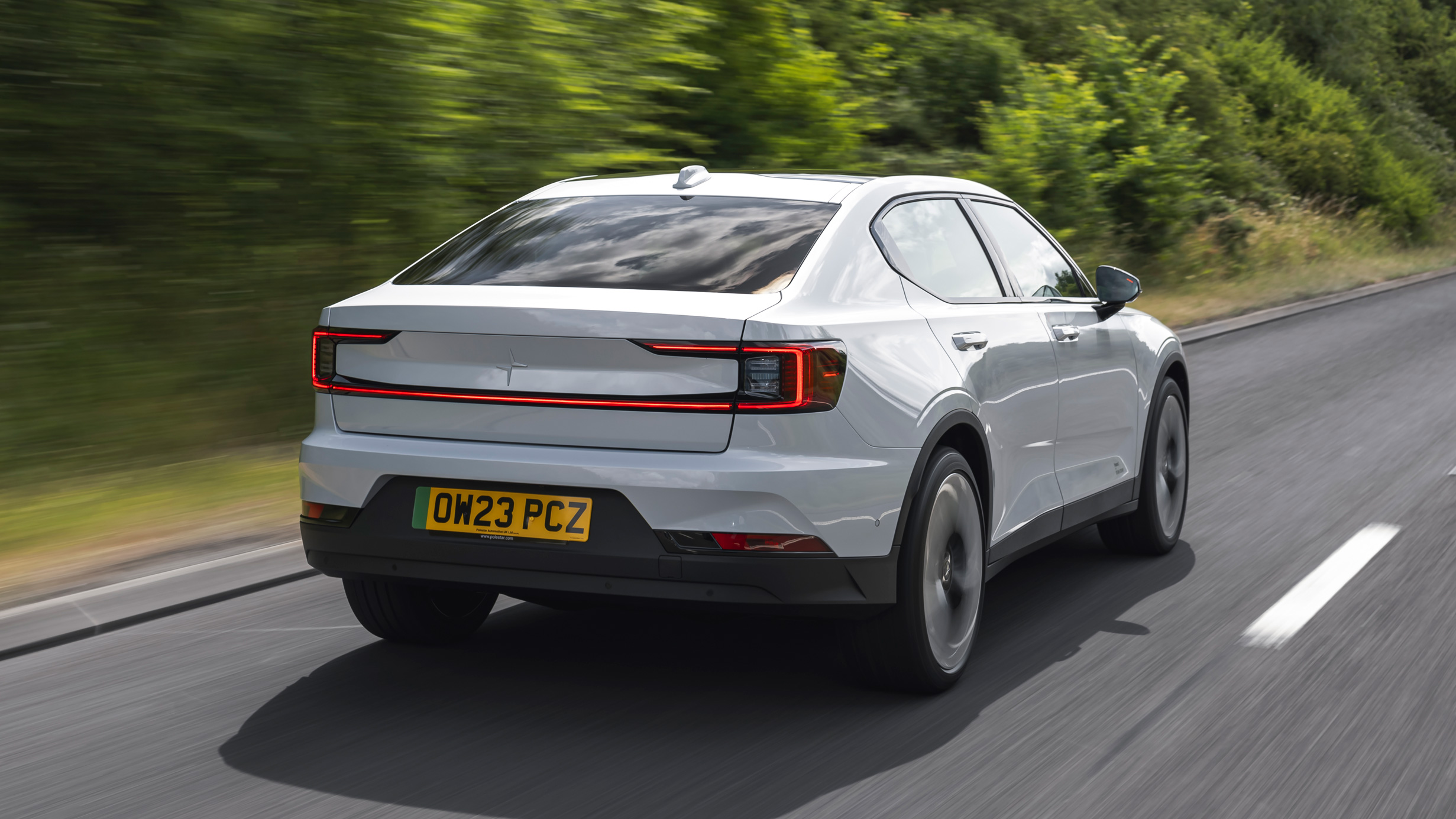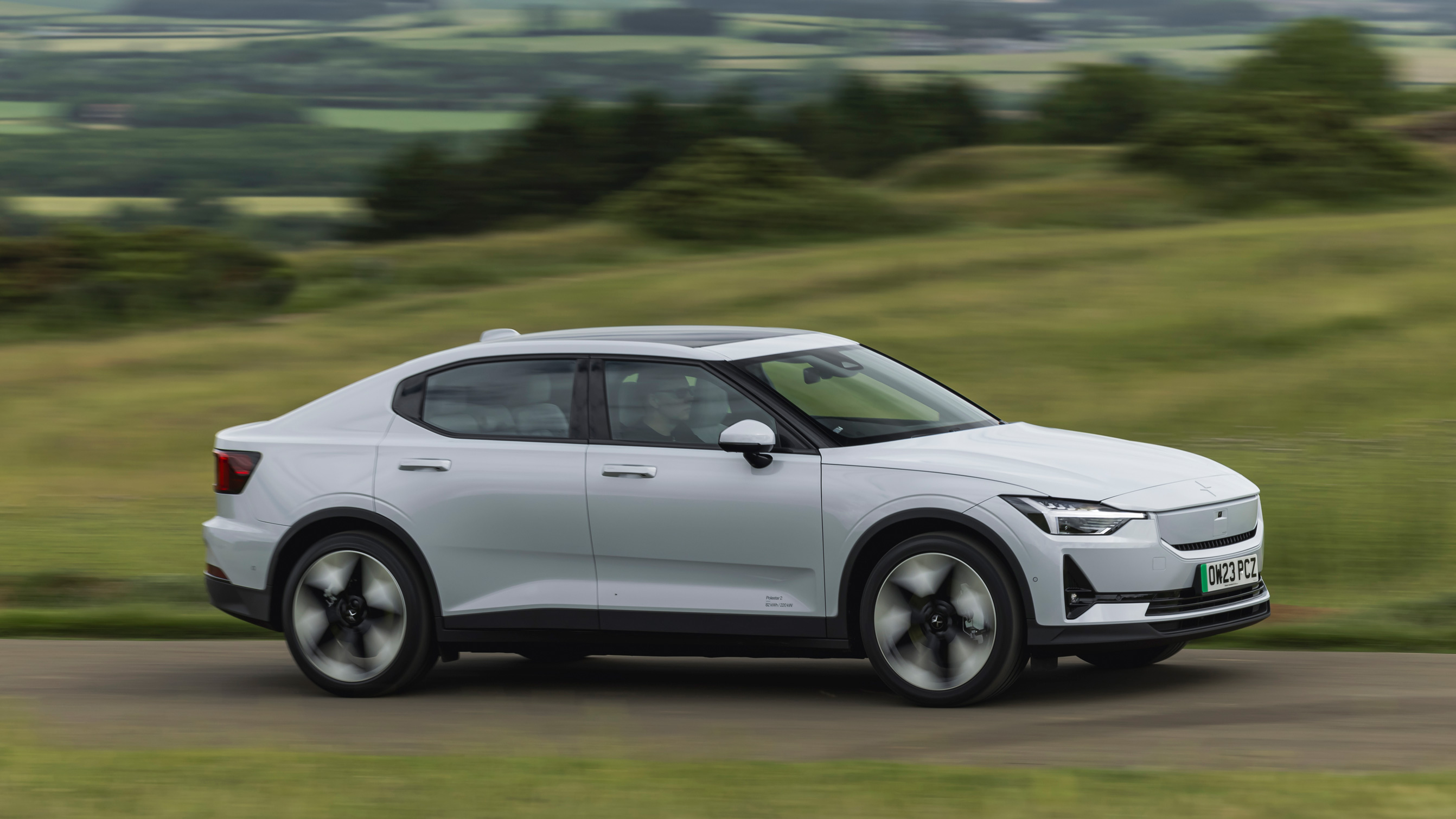
Good stuff
Beautifully built cabin, effortless performance, exceptionally cool image, the look on Tesla drivers’ faces
Bad stuff
Slightly firm ride, not the most natural driving position, who’s got time to tweak manually adjustable dampers?
Overview
What is it?
This is the Polestar 2, and it’s a fully-fledged production car designed to do the hard yards in establishing Polestar as a big player in the EV scene. It’s gunning for the biggest bullseye of them all right now: the Tesla Model 3.
Polestar was once Volvo’s racing skunkworks, but it’s morphed into a standalone electric offshoot, jointly owned by Volvo and its Chinese mothership, Geely. Its cars are built in China, to be sold worldwide. So it's Chinese ambition meets Swedish premium knowhow.
Polestar's first homebrew effort, a limited edition headline grabber, was a plug-in hybrid – the beautiful, £140,000 Polestar 1. Then it got serious and launched the Polestar 2 in 2019.
Fast forward to now and the 2 has proved popular, beating sales targets and developing a stronger sense of identity. And so the 2023 'refresh' (call it a facelift at your own peril) doesn't rock the boat, with maximum range rising from 341 to 406 miles. Doesn't seem superficial to us.
Hit me with those powertrains.
The entry-level Standard Range Single Motor gets a 69kWh battery that’s capable of up to 339 miles of range (up from 297) while the motor is now good for 268bhp (up from 228bhp).
Meanwhile the Long Range Single Motor upgrades the battery to an 82kWh unit – achieving that 406-mile headline figure – while power rises to 295bhp.
Then there's the top-spec Long Range Dual Motor, which features electric motors on the front and rear axles and up to 368 miles of range. It develops 416bhp split 50:50 front/rear, so it’s fast, despite weighing 2.1 tonnes.
Finally there's the Long Range Dual Motor Performance Pack – a £5,000 upgrade – that boosts power to 469bhp, chops the 0-60mph time down to four seconds flat, and brings bigger wheels, manually adjustable Öhlins dampers, Brembo brakes, and a neat gold finish to the calipers, dust caps and seat belts.
It uses its height not just to offer a more commanding view of the road than a conventional saloon, but also to carve out space for the water cooled battery pack, which lies beneath the cabin.
So it's Polestar vs Tesla?
Not really. Remember you’ve got the likes of the BMW i4 and Hyundai Ioniq 6 to consider as well now. And besides, the facelifted Model 3 can't match the Polestar for range. The interior’s way nicer too, and the Polestar LR Single Motor is about £1k cheaper.
That said, Polestar is finding its feet in the market and wants to do things its own way. CEO Thomas Ingenlath (an ex-Volvo design boss himself) has said that Polestar’s USPs will be build quality and the completeness of the car and ownership experience, not YouTube-friendly 0-60mph times.
He believes that now the world is warming up to electric cars, soon the idea of each car needing to carry around all the weight and cost of a 300+ mile range will seem as absurd as a car carrying around a second engine as a redundancy measure. Y’know, just in case. Polestar wants to make desirable and rapid electric cars, but it wants to do so with Scandi common sense. And Swedish fashion sense.
So it’s a looker?
Judge for yourself, but we think so. This is a sensational looking machine in the metal, crisp and fresh and clean cut, loaded with presence but wonderfully unadorned with fake vents or dummy aero nonsense. Blanked-off grille (something Polestar calls the 'Smartzone' for its sensory gizmos) aside, very little changed with the 2023 update.
It continues to look like the car the future promised, but it's distanced enough from a Volvo S60 (now killed off in the UK, of course) not to seem contrived. When you see one of these whoosh past, you’re going to want one.
You're right! How much please?
The entry-level car starts from £44,950, but the 400-mile-plus Long Range Single Motor – arguably the one you want – is £4k dearer. The same jump separates that and the Dual Motor 2 at £52,950.
Our choice from the range

What's the verdict?
We love the Polestar 2 because it’s handsome, the build quality will give Audi drivers PTSD, and there’s a real sense of humility about the car. It’s been designed to work seamlessly, not to wow you with gimmicks then wind you up further down the line. Single Motor iterations make it more accessible for most too.
Polestar wants to sell itself with integrity, not gimmicks. Of course, it’s not without niggles – the ride should be more supple, and coaxing Apple fans into a cabin enshrined with Google Android could be a challenge. CarPlay is now supported, at least.
Fundamentally though, the Polestar 2 is well finished, practical and drives adeptly, even if it stops just short of being outright fun. But it’s that sense of a brand really believing in its approach and starting to show its potential that’s exciting about Polestar, and the 2 in particular. And yep, Tesla ought to be paying attention. As should anyone else who fancies a slice of the electric future.
The Rivals
Trending this week
- Long Term Review
Is Jaecoo here to stay?









